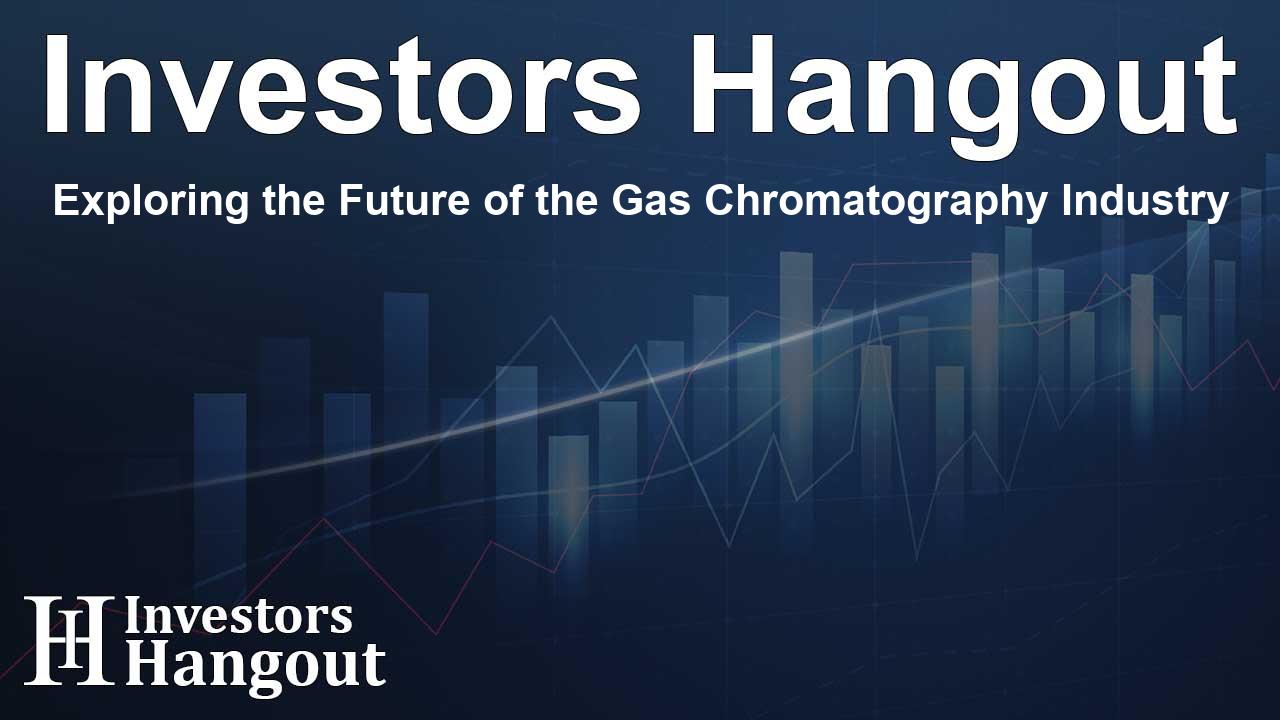Exploring the Future of the Gas Chromatography Industry

The Advancing Landscape of Gas Chromatography
The gas chromatography market is a vital sector in the analytical chemistry field, projected to reach a staggering USD 5.6 billion by 2032. This exciting forecast stems from the rising need for effective separation and analysis of volatile substances across various industries. Currently valued at around USD 3.3 billion in 2023, the market is expected to exhibit a remarkable growth rate, averaging 6.2% CAGR from 2024 to 2032.
Understanding Gas Chromatography
At its core, gas chromatography (GC) is a sophisticated analytical technique employed for separating and examining volatile compounds. This method involves passing a mixture through a column filled with a stationary phase. As components interact with this stationary phase, they are separated based on their individual chemical and physical properties. The ability of gas chromatography to precisely analyze complex mixtures is integral to maintaining safety and efficacy in critical sectors.
Applications in Key Industries
The demand for gas chromatography is particularly pronounced in the pharmaceutical and biotechnology industries, both of which are at the forefront of innovation and regulatory compliance. As these sectors evolve, drug development and quality control become increasingly complex, necessitating advanced analytical techniques. Gas chromatography serves as a critical tool to ensure that pharmaceutical products meet the highest purity and potency standards, ultimately protecting patient safety.
Market Segmentation Insights
Within the gas chromatography market, the accessories and consumables segment made a notable contribution by generating revenues of approximately USD 2 billion in 2023. This segment's sustained growth is influenced by an increasing need for high-quality consumables to ensure the optimal performance of gas chromatography systems. Efficient analysis relies heavily on reliable accessories, cementing their importance in the market.
The Role of Technological Advancements
Technological innovations represent a significant driver of growth within the gas chromatography market. Advances in chromatography technology—particularly regarding column materials, detectors, and software—are enhancing the overall efficiency and accuracy of gas chromatographic procedures. These improvements not only streamline operations but also facilitate rapid results, allowing industries to keep pace with demanding regulatory standards.
Regional Market Trends
The gas chromatography market in the United States is projected to attain USD 2.2 billion by 2032. This growth trajectory is fueled by ongoing technological advancements and the country's commitment to chromatography innovation. The developments in this field are enhancing system performance, resulting in increased accuracy, speed, and resolution. Consequently, diverse industries are adopting gas chromatography to meet their analytical needs.
Major Players Shaping the Market
The landscape of the gas chromatography industry features several key players, including Agilent Technologies, Thermo Fisher Scientific, PerkinElmer, and Merck KGaA, among others. These companies play a significant role in driving innovation and ensuring that gas chromatography solutions meet evolving market demands. Through dedicated research and development efforts, they aim to offer state-of-the-art products that address granular analytical requirements.
Future Growth Potential
Looking toward the future, the growth potential of the gas chromatography market is driven by increasing clinical and toxicological research initiatives, particularly as new pharmaceutical formulations emerge. The integration of advanced gas chromatography techniques into research and development processes is expected to bolster the market further, allowing for enhanced compliance with regulatory standards.
Frequently Asked Questions
What is gas chromatography used for?
Gas chromatography is primarily used for the separation and analysis of volatile compounds in various industries, including pharmaceuticals and environmental testing.
How is the gas chromatography market projected to grow?
The market is expected to grow to USD 5.6 billion by 2032, with a CAGR of 6.2% from 2024 to 2032, driven by technological advancements and increased demand.
Who are the major players in the gas chromatography market?
Major players include Agilent Technologies, PerkinElmer, Thermo Fisher Scientific, and Merck KGaA, who contribute to technological innovations and product advancements.
Why is gas chromatography important for pharmaceuticals?
Gas chromatography ensures the purity, potency, and stability of pharmaceutical products, playing a critical role in drug development and quality control.
How does technological advancement impact gas chromatography?
Technological advancements enhance the speed, accuracy, and resolution of gas chromatography systems, enabling industries to meet rigorous analytical requirements.
About Investors Hangout
Investors Hangout is a leading online stock forum for financial discussion and learning, offering a wide range of free tools and resources. It draws in traders of all levels, who exchange market knowledge, investigate trading tactics, and keep an eye on industry developments in real time. Featuring financial articles, stock message boards, quotes, charts, company profiles, and live news updates. Through cooperative learning and a wealth of informational resources, it helps users from novices creating their first portfolios to experts honing their techniques. Join Investors Hangout today: https://investorshangout.com/
Disclaimer: The content of this article is solely for general informational purposes only; it does not represent legal, financial, or investment advice. Investors Hangout does not offer financial advice; the author is not a licensed financial advisor. Consult a qualified advisor before making any financial or investment decisions based on this article. The author's interpretation of publicly available data shapes the opinions presented here; as a result, they should not be taken as advice to purchase, sell, or hold any securities mentioned or any other investments. The author does not guarantee the accuracy, completeness, or timeliness of any material, providing it "as is." Information and market conditions may change; past performance is not indicative of future outcomes. If any of the material offered here is inaccurate, please contact us for corrections.